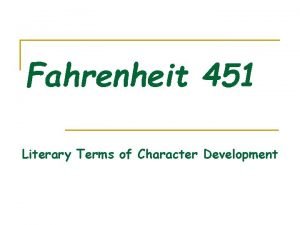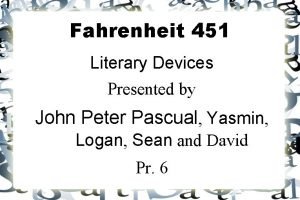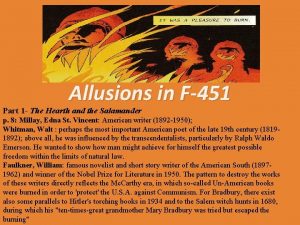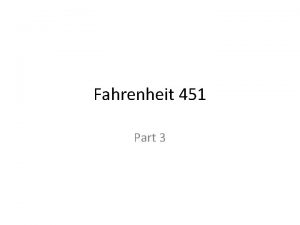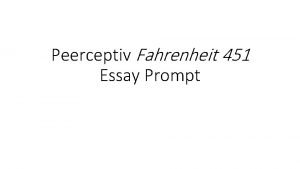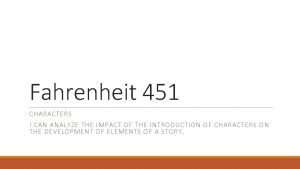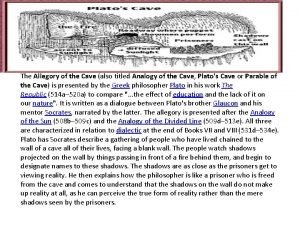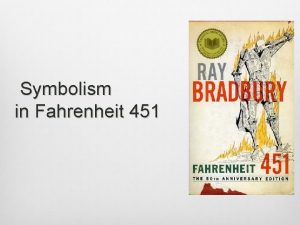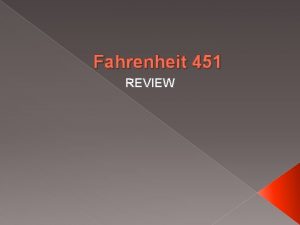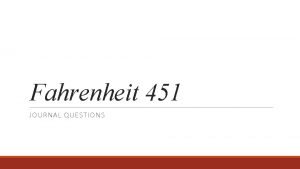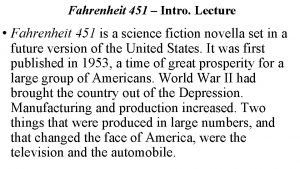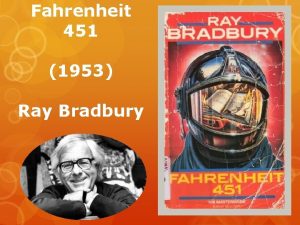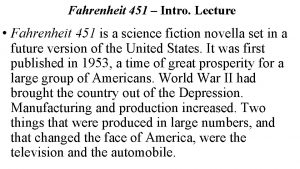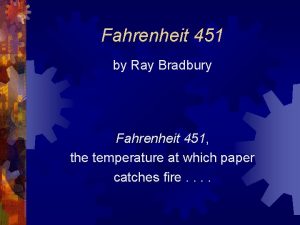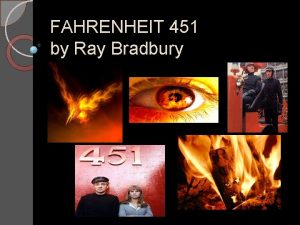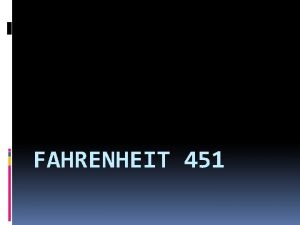Fahrenheit 451 Literary Terms of Character Development Learning











- Slides: 11

Fahrenheit 451 Literary Terms of Character Development

Learning Target n n Analyze how characters develop through their interactions with others. Key Terms: protagonist, antagonist, foil

Protagonist n n Main character in a piece of literature Often overcomes a weakness to achieve a new understanding May be called a “hero” if he/she acts with courage and strength His/her journey is made more dramatic by challenges from characters with different beliefs or perspectives

Foil n n n Provokes or challenges the protagonist The most important foil, the antagonist, opposes the protagonist, barring or complicating his/her success Examples: Romeo Montegue’s foils include the following: Juliet, Mercutio, Friar Lawrence, and Tybalt. His antagonist, or most important foil, is who? Why?

Foils in Fahrenheit 451 n Captain Beatty: the fire chief q n Faber: retired professor q n represents a musty, academic link to the past Clarisse: teenager q n key foil and a historian of sorts longs for the romantic days of front porches and rocking chairs: “we never ask questions. ” Mildred: the model citizen q lives in a world enchanted by television

Examine the role of “foils” in Fahrenheit 451 n n Directions: Identify occasions when a foil brings out dramatic responses from the protagonist, Guy Montag. Key Questions: q How does the character force Montag to reevaluate himself and/or lead Montag toward self-realization? q How does Montag’s relationship to the character change? q What textual evidence can you provide?

Character One: Captain Beatty n n How does the character force Montag to reevaluate himself and/or lead Montag toward self-realization? How does Montag’s relationship to the character change?

Character Two: Professor Faber n n How does the character force Montag to reevaluate himself and/or lead Montag toward self-realization? How does Montag’s relationship to the character change?

Character Three: Clarisse Mc. Clellan n n How does the character force Montag to reevaluate himself and/or lead Montag toward self-realization? How does Montag’s relationship to the character change?

Character Four: Mildred Montag n n How does the character force Montag to reevaluate himself and/or lead Montag toward self-realization? How does Montag’s relationship to the character change?

Who is the Antagonist? n Antagonist = n Explanation = n Textual Evidence =
 Character development in fahrenheit 451
Character development in fahrenheit 451 Merchant of venice literary analysis
Merchant of venice literary analysis Literary devices used in fahrenheit 451
Literary devices used in fahrenheit 451 Mythological references in fahrenheit 451
Mythological references in fahrenheit 451 Fahrenheit 451 part 3 discussion questions
Fahrenheit 451 part 3 discussion questions Peerceptiv
Peerceptiv Fahrenheit 451 characters
Fahrenheit 451 characters Literary terms dynamic character
Literary terms dynamic character Fahrenheit 451 salamander quote
Fahrenheit 451 salamander quote Allegory of the cave and fahrenheit 451
Allegory of the cave and fahrenheit 451 Guy montag
Guy montag Symbols in fahrenheit 451
Symbols in fahrenheit 451
